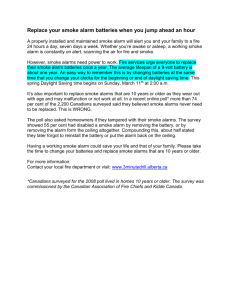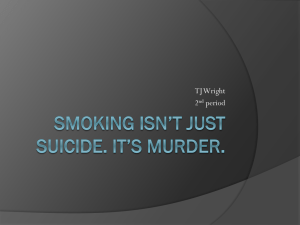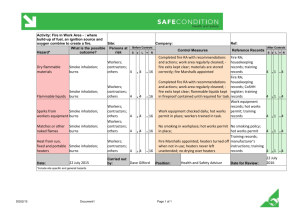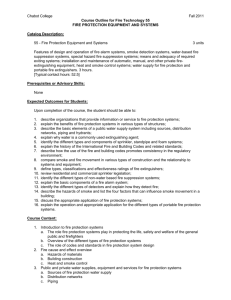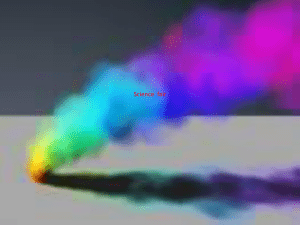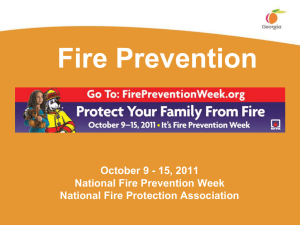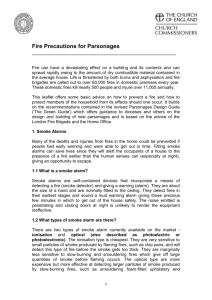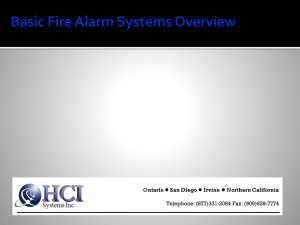Arson Arson is the most common cause of fires in NHS premises as
advertisement
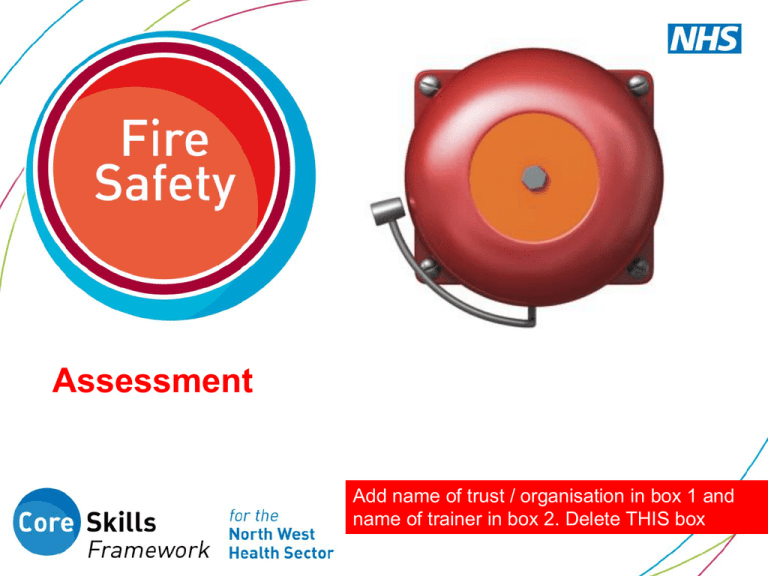
Assessment Add name of trust / organisation in box 1 and name of trainer in box 2. Delete THIS box 1. A “triangle of fire” could consist of paper waste, lit cigarettes and air 100% 1. TRUE 2. FALSE 0% 1 2 Correct Answer is 1- True For a fire to exist it needs three elements: PAPER = FUEL for the fire to burn CIGARETTES = HEAT for the fire to continue burning AIR = OXYGEN for the fire to breathe If any of these elements are missing or removed the fire will go out. If you stop the sources of 3 elements coming together, you can significantly reduce the chances of a fire happening. By understanding how and where these sources occur you can aim to prevent them becoming a fire threat. 2. Which of the following is the most common cause of fire on NHS premises? 83% 1. Smoking 2. Arson 3. Electrical equipment 17% 0% 1 2 Correct Answer is 2 - Arson Arson is the most common cause of fires in NHS premises as they are an easy target. It’s important therefore to: • be on your guard • ensure that you know the organisation’s hotline number • call the Police if suspicious. Other common causes are Smoking • Enforce No Smoking Policy • Use Smoking Areas • Use ashtrays; empty into metal bins • Discard smoking materials safely; make sure they are OUT Electrical Equipment • Make sure your equipment is tested • Are there signs of damage, overheating, not working properly ? • If in doubt Switch Off and Report • Can be a Fire Hazard if in bad condition or used wrongly 3. Select the most appropriate/correct action to take when dealing with faulty electrical equipment 86% 1. Report the fault and leave the room by the nearest safe exit 2. Use water to extinguish to be on the safe side 3. Pull out the plug 14% 0% 1 2 3 Correct Answer is 3 - Pull out the plug If there is faulty electrical equipment, pull the plug out - if it's safe to do so. You should always report any suspected faults, but it’s important to ensure that other users know that the equipment is faulty. So leave a note to warn colleagues at least Never use water on an electrical fire, and don't take any risks with your safety - get out, stay out and call the emergency number for your organisation. 1. 2. 3. 4. 4. What is the minimum time an NHS fire door will contain fire, smoke and toxic gases? 100% 30 mins 1 hour 2 hours 3 hours 0% 0% 1 2 0% Correct Answer is 1 – 30 minutes Fire doors have different fire-resistance ratings. When fire doors are used as part of a passive fire protection system, they reduce the spread of fire or smoke between zones and to enable safe exit from a building. FIRE DOORS •Protect escape routes AND create safe zones •Stop spread of fire and smoke •Save lives 5. Which 1 of the following statements is not true? 97% 1. All waste should be disposed of safely and correctly 2. Only Managers are responsible for arson prevention 3. Flammable liquids should be kept securely in the appropriate containers 3% 1 0% 2 3 Correct Answer is 2 – Only Managers are responsible for arson prevention this statement is INCORRECT Waste such as shredded paper, cardboard boxes and aerosols are sources of fuel for a fire Laundry should be stored away neatly and safely. It can be a source of fuel for a fire. Examples of flammable liquids: • everyday cleaning products • chemicals such as alcohols, acetone, turpentine, ethol. Everyone has a responsibility to prevent fires 6. In the event of a fire and patients have been evacuated, which of the following statements is not a priority? 100% 1. Ensure that evacuated patients’ health needs are still being met 2. Determine if it's safe to re-enter the building to obtain unused medical equipment 3. Make sure that someone is available to direct the fire brigade to the area of the fire 0% 0% 1 2 Correct Answer is 2 - Determine if it's safe to re-enter the building to obtain much-needed medical equipment Your personal responsibility is to the patients, colleagues and yourself Fire-fighters are the experts. Direct them to the fire as quickly as possible. This action can save lives 7. Which of the following shouldn’t you do if you wanted to find out if the fire alarm automatically dials the fire brigade? 100% 1. Ask your line manager 2. Phone the Fire Safety Advisor 3. Access and refer to local policy 4. Try a false alarm to see what happens 0% 0% 0% 1 2 Correct Answer is 4 - Try a false alarm to see what happens It’s knowing the information that’s important so the right course of action would be to :•Ask your line manager •Phone the Fire Safety Advisor •Access and refer to local policy 8. What is the primary cause of death from indoor fires? 100% 1. Burns 2. Heat exposure 3. Smoke inhalation 0% 1 0% 2 3 Correct Answer is 3 – smoke inhalation Smoke inhalation is the number one cause of death related to fires. An estimated 50%-80% of fire deaths are the result of smoke inhalation injuries rather than burns. Smoke inhalation occurs when an individual breathes in the products of combustion during a fire. Combustion results from the rapid breakdown of a substance by heat (more commonly called burning). Smoke is a mixture of heated particles and gases. It is impossible to predict the exact composition of smoke produced by a fire. The products being burned, the temperature of the fire, and the amount of oxygen available to the fire all make a difference in the type of smoke produced. 9. Which one of the following statements is the most likely causes of electrical fires in workplace: 94% 1. Appliances turned off when not in use 2. Trapped or pinched electric cables 3. More than one appliance in use 6% 0% 1 2 3 Correct Answer is 2 - Trapped or pinched electric cables Electrical cables and leads • Ensure electrical cables cannot become trapped or pinched which could result in malfunction • Secure with cable ties if possible • Make sure the outer covering of all power leads is in good condition and report if necessary Plugs and sockets Look out for the following: • Hot plugs or sockets, scorch marks, fuses that often blow, or flickering lights - they are all are signs of loose wiring or other electrical problems • Badly wired plugs – any coloured wires sticking out could come loose and debris could also get into the plug • Overloaded sockets – plugging too many electrical appliances into one socket can lead to overheating Cables and leads The risks with cables and leads include: • Damage • Inappropriate positioning – they should not be anywhere that they could be tripped over, or near water or sources of heat Appliances • Never get them wet • Switch off and unplug electrical appliances when not in use 10. If you had to advise a colleague about appropriate evacuation in the event of an emergency, which of the following statements 100% would you use? 1. Always leave by the route that is most familiar to you 2. Leave the building the way you came in 3. Get out of the nearest window 4. Use safest and most direct route 0% 1 0% 0% 2 3 4 Correct Answer is 4 - Use safest and most direct route Evacuate the building by the safest and most direct route, and report to the appropriate assembly point. Make sure you are familiar with local knowledge appropriate to your workplace • Where are the escape routes? • Where is the safe refuge point? • Where is the appropriate assembly point? • How will the patients be moved? • What are the security arrangements? • Where are the fire alarm call points? • What are the different types of alarm signals? • When are alarm test days? THANK YOU End of the assessment Delegate Scores 10 Rachael BYRNE 10 Samantha Elise KEANE 10 Kirsty Anne FORREST 10 Emily Jane GARNETT 10 Hannah Claire STOKES 10 Vicki-lea BELL 10 Anne-Marie BOOTH 9 Emma SADLER 10 Rachel ASTLES 10 Amy GREGORY 10 Ashley-marie SMITH 10 Stacey Barbara HEATH 10 Thomas Luke KELLETT 10 Rachael Victoria JONES

